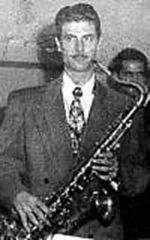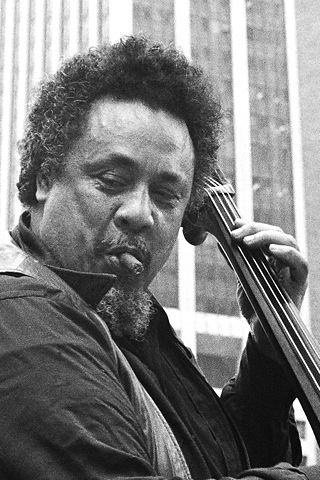
Charles Mingus Jr. was an American jazz upright bassist, composer, bandleader, pianist, and author. A major proponent of collective improvisation, he is considered one of the greatest jazz musicians and composers in history, with a career spanning three decades and collaborations with other jazz greats such as Duke Ellington, Charlie Parker, Max Roach, and Eric Dolphy. Mingus's work ranged from advanced bebop and avant-garde jazz with small and midsize ensembles to pioneering the post-bop style on seminal recordings like Pithecanthropus Erectus (1956) and Mingus Ah Um (1959) and progressive big band experiments such as The Black Saint and the Sinner Lady (1963).

Charles Parker Jr., nicknamed "Bird" or "Yardbird", was an American jazz saxophonist, bandleader, and composer. Parker was a highly influential soloist and leading figure in the development of bebop, a form of jazz characterized by fast tempos, virtuosic technique, and advanced harmonies. He was a virtuoso and introduced revolutionary rhythmic and harmonic ideas into jazz, including rapid passing chords, new variants of altered chords, and chord substitutions. Parker was primarily a player of the alto saxophone.

Grant Green was an American jazz guitarist and composer.

Harold Floyd "Tina" Brooks was an American jazz tenor saxophonist and composer best remembered for his work in the hard bop style.

Mosaic Records is an American jazz record company and label established in 1982 by Michael Cuscuna and Charlie Lourie. It produces limited-edition box sets.
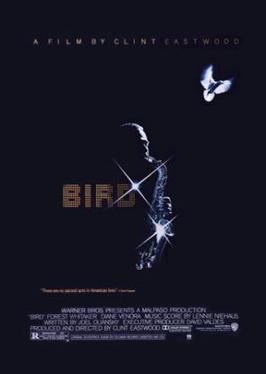
Bird is a 1988 American biographical musical drama film about jazz saxophonist Charlie "Bird" Parker, directed and produced by Clint Eastwood from a screenplay by Joel Oliansky. The film stars Forest Whitaker as Parker, and Diane Venora. It is constructed as a montage of scenes from Parker's life, from his childhood in Kansas City, through his early death at the age of 34.
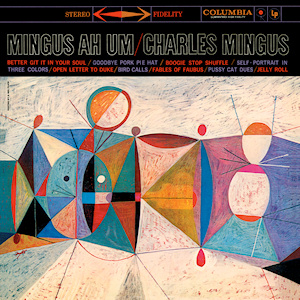
Mingus Ah Um is a studio album by American jazz musician Charles Mingus which was released in October 1959 by Columbia Records. It was his first album recorded for Columbia. The cover features a painting by S. Neil Fujita. The title is a corruption of an imaginary Latin declension. It is common for Latin students to memorize Latin adjectives by first saying the masculine nominative, then the feminine nominative, and finally the neuter nominative singular —implying a transformation of his name, Mingus, Minga, Mingum. The album was inducted into the Grammy Hall of Fame in 2013.

A Night at the "Village Vanguard" is a live album by American jazz saxophonist Sonny Rollins recorded at the Village Vanguard in New York City on November 3, 1957 and released on Blue Note the following year.

Philip van Noorden Schaap was an American radio host, who specialized in jazz as a broadcaster, historian, archivist, and producer. He hosted an assortment of jazz programs at WKCR and WNYC in New York City and WBGO in Newark, N.J. He began presenting jazz shows on Columbia University's WKCR in 1970, and hosted Bird Flight and Traditions In Swing on WKCR for 40 years, shows which are broadcast in archival versions to this day, beginning in 1981. He received six Grammy Awards over the course of his career.
Joe Albany was an American modern jazz pianist who played bebop with Charlie Parker as well as being a leader on his own recordings.

This is a list of recordings by American jazz alto saxophonist Charlie Parker ("Bird"). Parker primarily recorded for three labels: Savoy, Dial, and Verve. His work with these labels has been chronicled in box sets. Charlie Parker's Savoy and Dial Sessions have been issued on The Complete Savoy Sessions, Charlie Parker on Dial and Complete Charlie Parker on Dial and The Complete Savoy & Dial Master Takes. His Verve recordings are available on Bird: The Complete Charlie Parker on Verve and The Complete Verve Master Takes.
"Yardbird Suite" is a bebop standard composed by jazz saxophonist Charlie Parker in 1946. The title combines Parker's nickname "Yardbird" and a colloquial use of the classical music term "suite". The composition uses an 32-bar AABA form. The "graceful, hip melody, became something of an anthem for beboppers."

Kenny "Pancho" Hagood was an American jazz vocalist.

Michael Cuscuna was an American jazz record producer and writer. He was the co-founder of Mosaic Records and a discographer of Blue Note Records.

Charlie Parker on Dial: The Complete Sessions is a 1993 four-disc box set collecting jazz saxophonist and composer Charlie Parker's 1940s recordings for Dial Records. The box set, released by the English label Spotlite Records, assembled into a single package the multi-volume compilation albums the label had released by Spotlite on vinyl in the 1970s under the series title Charlie Parker on Dial. The box set has been critically well received. In 1996, a different box set collecting Parker's work with Dial was assembled by Jazz Classics and released as Complete Charlie Parker on Dial.

The Complete Blue Note Recordings of Thelonious Monk is a box set by American jazz pianist Thelonious Monk compiling his recordings for Blue Note first released as a limited four-LP box set on Mosaic Records in 1983 before being issued as a four-CD box set by Blue Note for the first time in 1994 as The Complete Blue Note Recordings.
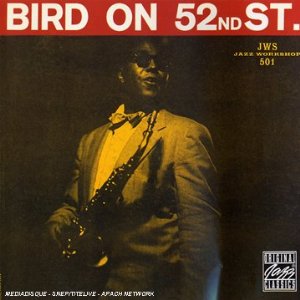
Bird on 52nd St. is a live album by the saxophonist Charlie Parker. It was recorded in July 1948 at the Onyx Club on a non-professional tape recorder by trombonist Jimmy Knepper, a fan of Parker who also made the recording released as Bird at St. Nick's. It was first released in 1957 on Charles Mingus' Jazz Workshop label as JWS 501. Several tracks are incomplete; Knepper was focused on capturing Parker's solos to conserve audiotape. AllMusic reviewer Scott Yanow wrote that Parker "plays quite brilliantly on this live set", but because of seriously deficient sound quality which "sometimes borders on the unlistenable" the album can be considered as being "for true Charlie Parker completists only."
Jack Towers was in charge of radio broadcasting at the U.S. Department of Agriculture from 1952 to 1974 and became a noted remastering engineer of musical recordings after his retirement.

Bird at St. Nick's was a live tape recording by Charlie Parker taken from a February 1950 performance at St. Nicholas Arena. The recording was made on non-professional equipment by Jimmy Knepper, a fan of Parker. As with his recording released as Bird on 52nd St., Knepper focused mainly on recording Parker's solos to conserve audiotape. The album was the first release on Charles Mingus' Jazz Workshop label.
"Relaxin' at Camarillo" is a composition by jazz saxophonist Charlie Parker. It is inspired by his six-month stay in Camarillo State Hospital in Ventura County, California, after serving a prison term for arson and resisting arrest. The tune is a blues in C major and has become a jazz standard.
